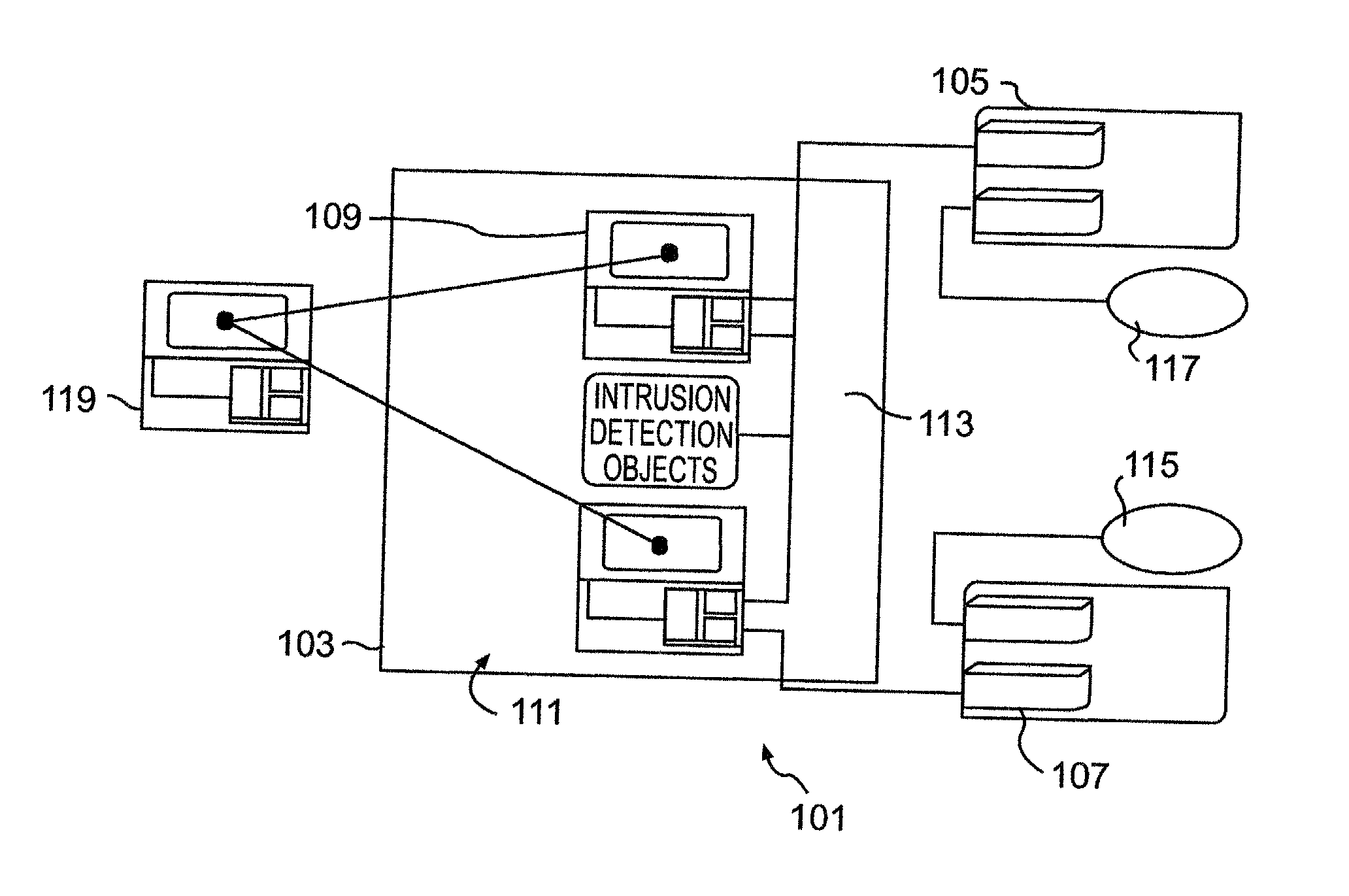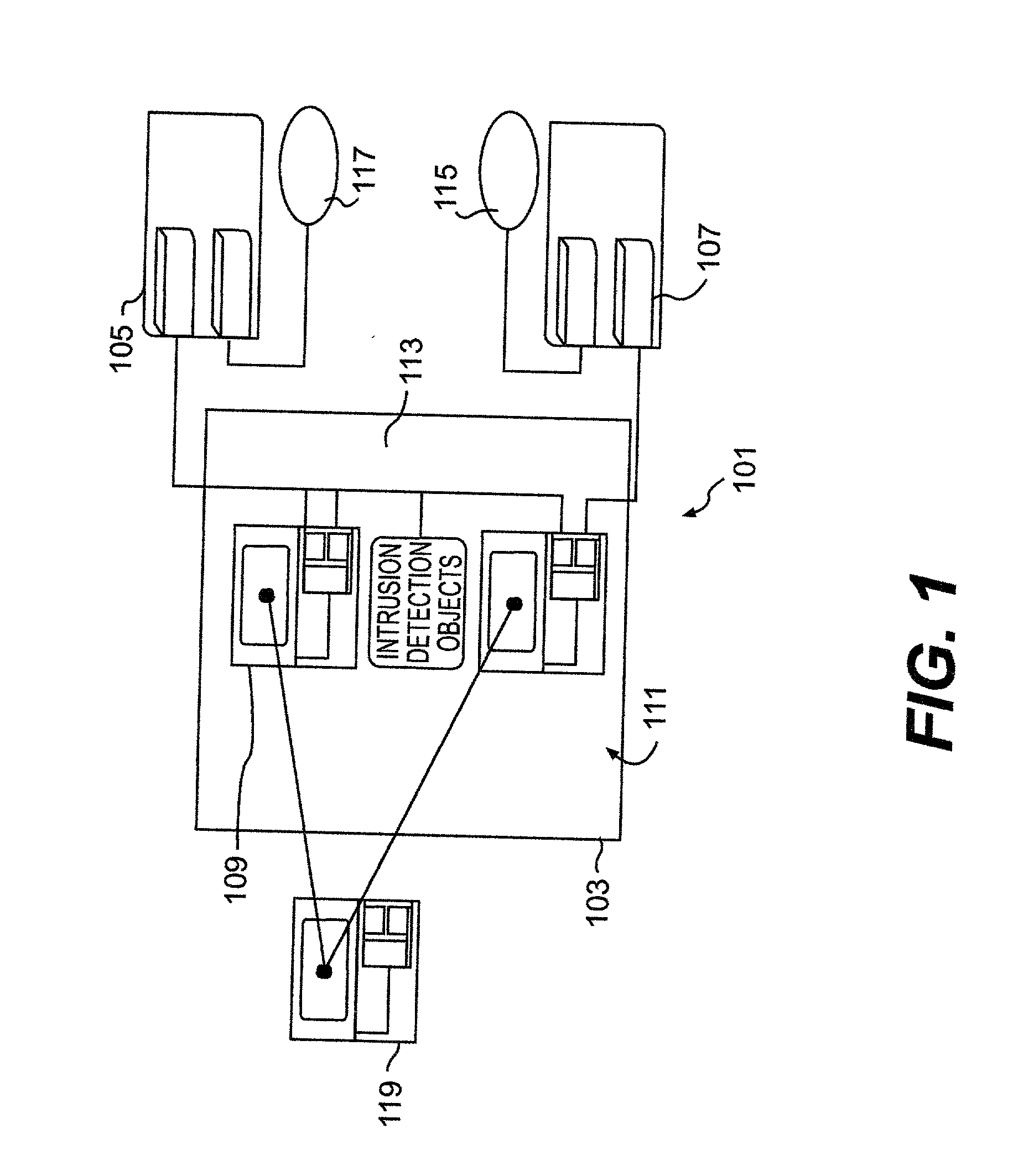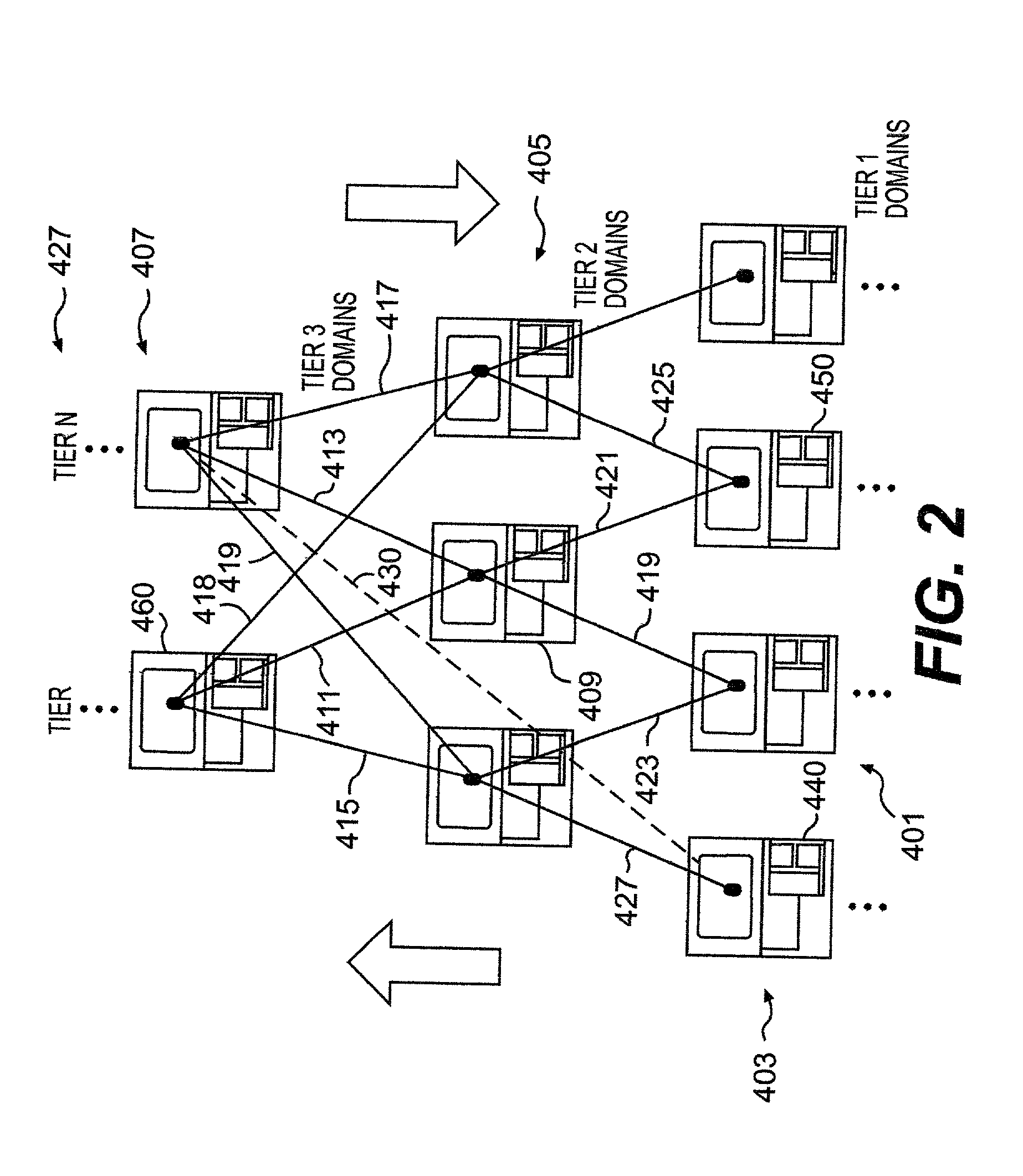When such technical capabilities such as the development of the TCP / IP protocol were being initially developed, however, flexibility of
interconnectivity,
scalability and ease and reliability of
data exchange were of paramount importance and the importance of security measures was not fully appreciated and left to be implemented at individual processors or individual resources to prevent access from other connected processors.
On the other hand, limiting access of processors to only secure or unsecure networks reduces functionality of the processor to levels which may be unacceptable clue to the reduction of accessible resources.
This circumstance presents a fundamental
threat to the
global network infrastructure that must be ameliorated if security of any network or connected resource is to be achieved.
Accordingly, there are numerous reports of increasingly sophisticated intruder attacks on both military and commercial computer systems.
Yet another form of attack which is of increasing concern is the "denial of service" (DOS) attack in which normal network functions are demanded at rates approaching or exceeding
system capacity to respond, thereby denying service to other requestors or otherwise disrupting other communications or services such as overloading telephone or power
distribution networks.
Networks are inherently susceptible to attack by exploitation of security weaknesses in network protocols and infrastructure components.
In addition to unauthorized viewing and modification of data, alluded to above,
security controls of the operating systems and applications installed on the network may be circumvented, network firewalls (used extensively at network boundaries) may be penetrated, network functions may be disrupted, sessions of authorized users (after they have been authenticated) can be stolen and routing functions of the network can be disrupted to misdirect
network data.
A concerted attack on military network infrastructure can compromise military operations or force network shutdown.
Identification and
authentication (I&A) capabilities provided by recently developed forms of identification certificates does not provide technical mechanisms to respond to attacks against network protocols.
However, firewalls become geometrically more difficult to manage as the number and variety of authorized accesses increases.
This difficulty is particularly evident in military networks which become particularly susceptible to penetration through exploitation of errors in configuration of their
access control rule set.
However, firewalls are not fully effective since the manner in which TCP / IP manages packet fragmentation can be exploited for "
punching through" the
packet filtering system of firewalls.
Further, it is difficult to force all network access to be made only through the firewall.
The availability of commercial modems that interface to digital PBX systems and the Remote Access
Server included in
Microsoft Windows (TM)
software makes control of the use of dial-up connections to the network through firewalls impractical.
However, such systems are costly and generally implemented on only the most sensitive systems and can, nevertheless, be rendered ineffective by session hijacking attacks, alluded to above, because of the inability of TCP / IP to authenticate the
source address packets, to close out "half-open" connections and to protect the session sequence numbers contained in the TCP header.
This approach is extremely costly, limits the functionality of each separate
system, presents problems of maintaining
data integrity and provides no protection from misuse or damage by persons having access to any given system.
It can be readily appreciated that MAC and DAC may each be complex and overlap with much increased complexity, greatly multiplying the number of separate systems which may be required among which
data integrity must be maintained.
Detection of an attack before substantial damage is done is often difficult, particularly when the attack is of the denial of service type.
Viruses, for example, cannot be detected before at least some of their basic characteristics (e.g. a filename by which they are executed) is known; by which time the
virus may have been widely proliferated, causing some degree of damage to each computer it has reached.
Therefore, achieving a
degree of certainty that an attack is in progress commensurate with the magnitude of necessary system disruption often unacceptably delays action and thus does not acceptably limit damage or prevent access to critical data or resources.
In summary, enhancement of security in digital networks is extremely challenging in view of the weaknesses in protocols which cannot readily be changed.
Most approaches proposed to date are extremely costly and compromise system functionality and utility while being difficult to implement in complex environments that cannot readily be modified.
Proposals for security enhancements to date have also not been easily scalable, potentially functional across multiple networks or globally, adequately sensitive to potential attacks, capable of accurately and quickly isolating a fault or an attack and allowing error
recovery or able to actively protect against attacks by authorized users, the currently most frequent source of system attacks.
 Login to View More
Login to View More  Login to View More
Login to View More 


